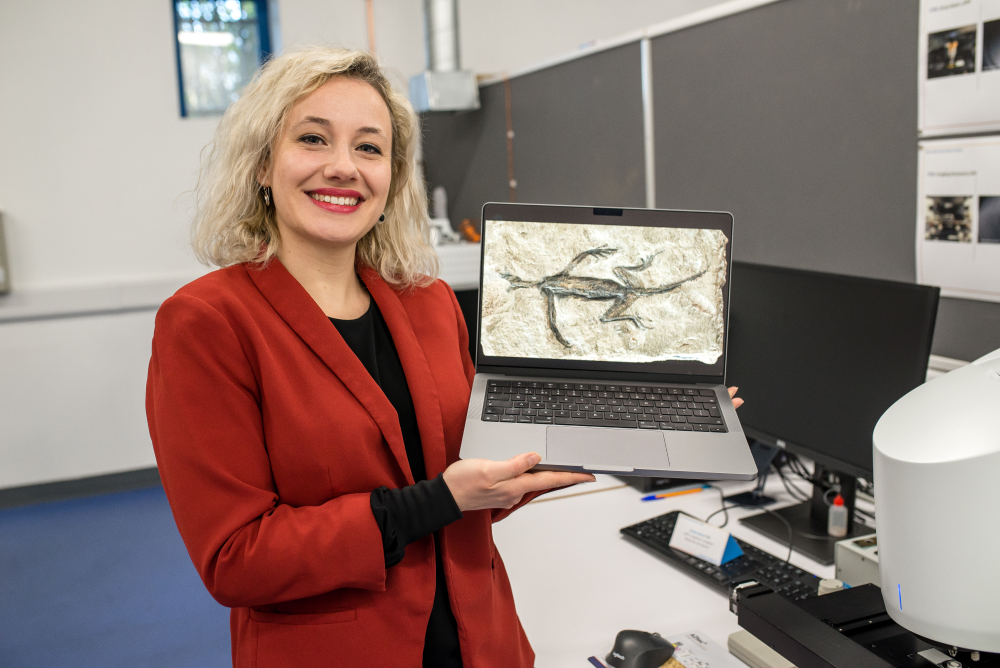A magnificent fossil find was made in the Italian Alps in 1931. The specimen retrieved was thought to show remarkable preservation of an ancient reptile’s soft tissues, but that wasn’t the whole story. Now, a new study has revealed what makes this unusually well-preserved fossil so unusual: that “soft tissue” is, in fact, just black paint on a carved surface.
The specimen, believed to be around 280 million years old, was classified as a reptile of the Protorosauria group based on its morphology and preserved soft tissues that had a dark coloration. Thought to be skin, it was held up as a shining example of exemplary preservation in multiple publications following its discovery, but nobody had ever taken that close a look at its composition.
Technology, as we know, marches on, and armed with tech that wasn’t available at the time of the fossil’s discovery, a team of researchers decided to take a closer look. Ultraviolet (UV) photography revealed the first clue that all was not as it seemed when it showed that it had been treated with some kind of coating material.
This wasn’t yet the “aha!” moment, however, as they figured that it may have been a conservation technique (coating fossils with varnish used to be common practice) and hoped that palaeobiological treasure was sitting just beneath the surface. However, further examination revealed that those soft tissues really were just paint, though the fossil – belonging to Tridentinosaurus antiquus – wasn’t a total fake.

Dr Valentina Rossi with an image of Tridentinosaurus antiquus.
Image credit: Zixiao Yang
“We now know that this fossil is not complete and definitely not exceptionally preserved, meaning that it doesn’t have soft tissues preserved,” study lead Dr Valentina Rossi of University College Cork told IFLScience. “We discovered however that some bones and osteoderms are preserved so potentially there is more that we can do in the future, including do more fieldwork to find new and better-preserved specimens.”
Fraudulent fossils have been a common theme among palaeontological hoaxes, with the Piltdown Man being one of the greatest in the history of science. The forged remains of an animal that was “part human, part ape” gripped the attention of palaeontologists for the first half of the 20th century before it was exposed as a fake in 1953.
Beyond being a waste of time, partial and complete fakes have the potential to skew our understanding of natural history, so uncovering them Scooby-Doo style is a crucial step toward discovering the truth. Fortunately, studies such as this one go to show that we have the tools in our arsenal to recognize forgeries for what they really are.
“This discovery was a total surprise, but I think the story here is very powerful,” added Rossi. “Forged fossils are a big problem because these are often produced en mass in developing countries and then sold to the black market. So it’s crucial for paleontologists to be able to recognize them and most importantly be aware of what materials may be used to produce a fake fossil.”
The study is published in the journal Palaeontology.
Source Link: 280-Million-Year-Old Mystery Solved As Forged Fossil's "Skin" Identified As Paint